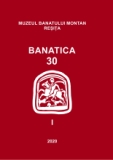Orizontul funerar de tip sud-dunarean 2, pe teritoriul Olteniei, faza I (secolele XIXIII)
South-Danubian burial horizon, type 2, within the territory of Oltenia, phase I (11th–13th centuries)
Author(s): Silviu OţaSubject(s): Archaeology, Cultural history, Ancient World
Published by: Editura Mega Print SRL
Keywords: graves; bracelets; rings; necropolises;
Summary/Abstract: The same funeral horizon of Byzantine origin is known, except for the Banat, in the northern area of the Danube, between the Southern Carpathians, the Danube and the Olt River, in the 11th –12th century up to the third quarter of the 13th century. This is the alone one which was indentified all along the studied area and within the noted chronologic interval. It makes the 1st phase of a larger horizon, from the end of the 13th century up to the 15th century (2nd phase) southward of the Carpathians. It could be noticeable in certain places, in the Banat, the Dobrudja, Moldavia, and southern and eastern Transylvania. Some sites with necropolises or isolated foundings were analyzed within the article, especially along the Danube (Drobeta-Turnu Severin–Roman Thermal Baths, Hinova-C. Trocan’s property, Izâmbașa-Dealul Fântânilor, Izvoarele-Unknown site, Celeiu, OrleaUnknown site, Ostrovul Mare-Km. Fluvial 875), in the area of the Olt, (Ferigele) and the Jiu (Craiova-Făcăi). All the data referring to the funeral ritual we had at our disposal were taken into account. The foundings consist mainly in female ornaments (tings, tiaras, shells necklaces, bracelets), but also in coins and buttons. Part of those cemeteries functioned also during the next age (Drobeta-Turnu Severin-Roman Thermal Baths), others were probably abandoned.
Journal: BANATICA
- Issue Year: 1/2020
- Issue No: 30
- Page Range: 349-373
- Page Count: 25
- Language: Romanian

